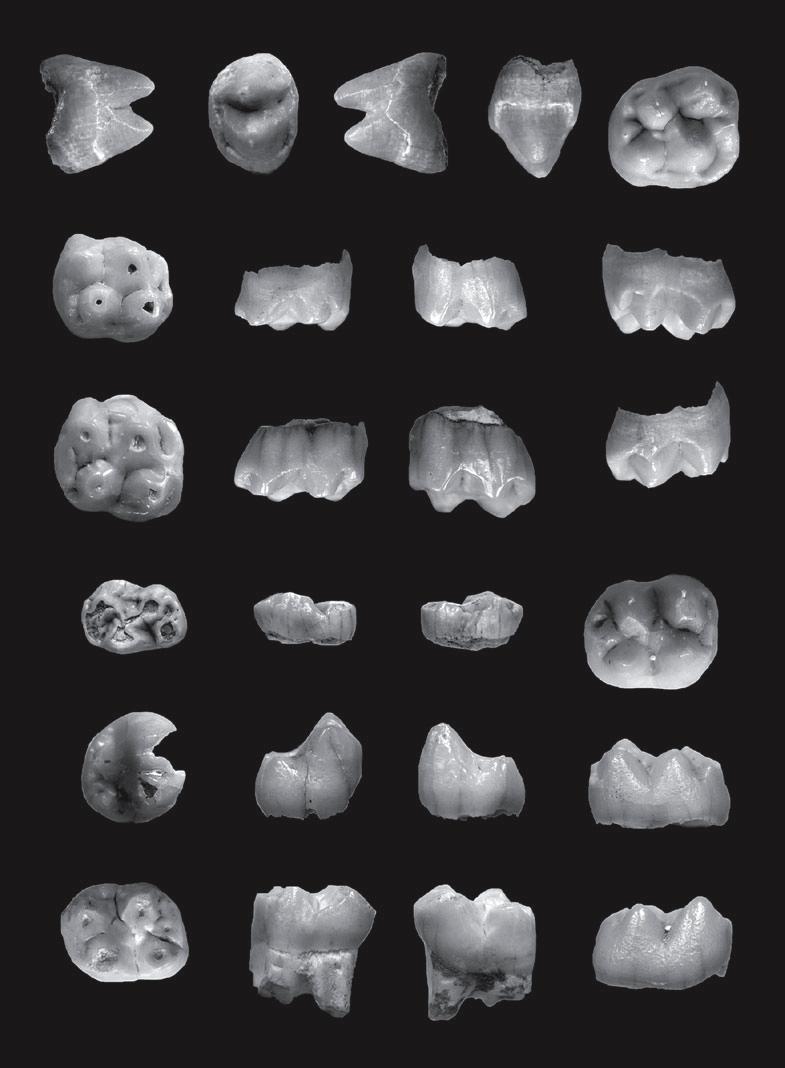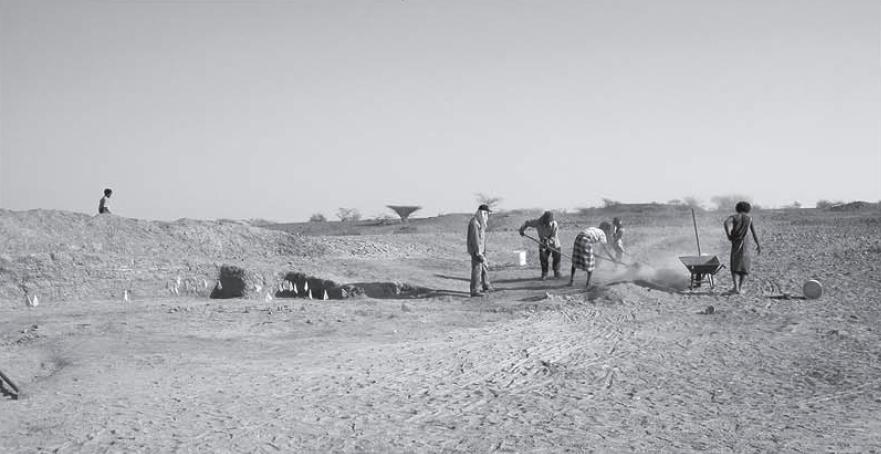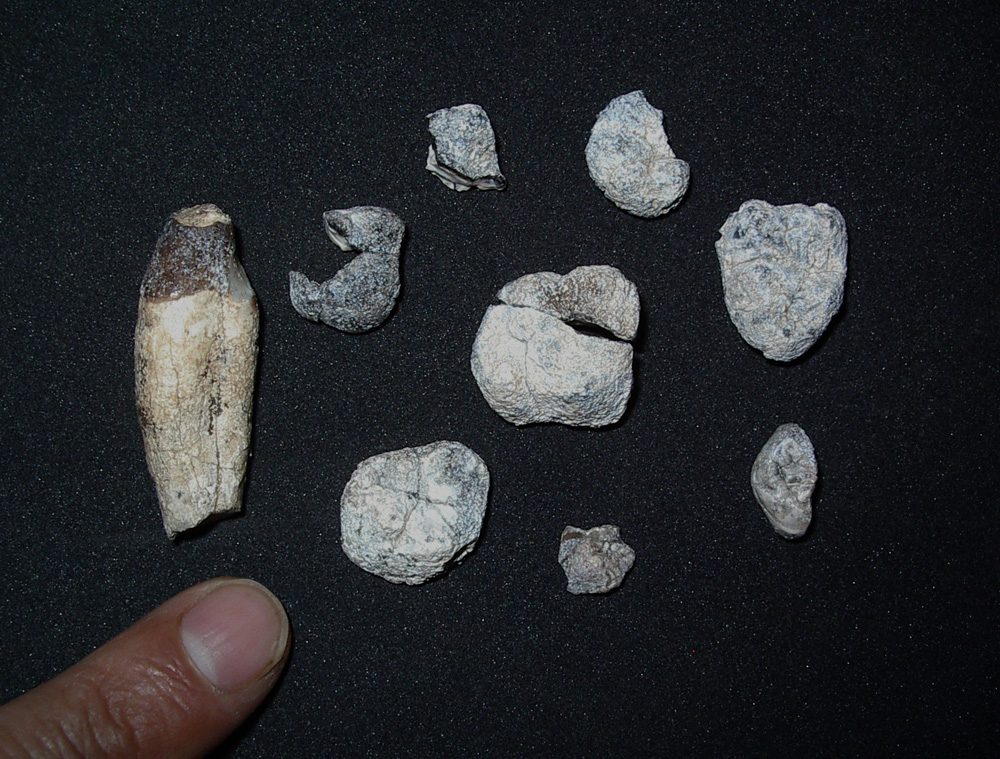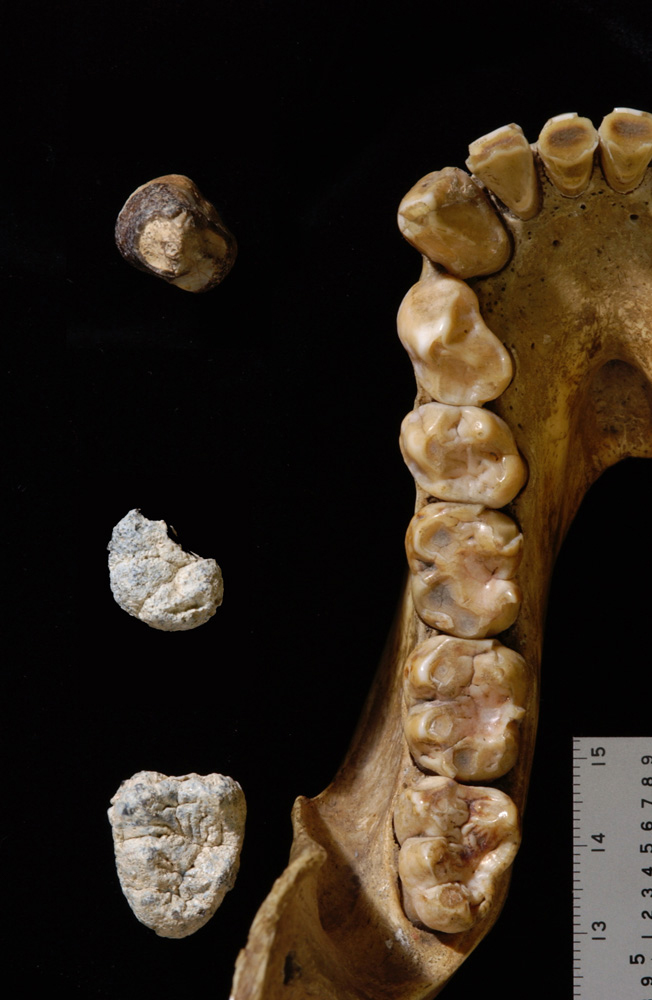HOME • EDUCATION • RHOI PUBLICATIONS • RHOI BIBLIOGRAPHY • RHOI STRUCTURE • INFORMATICS • MAP ARCHIVE: EXPLORATION
|
|
2008 SARDINIA, ITALY (RHOI-supported) A preliminary report on the recovery of some 2400 vertebrate specimens from the late Miocene site of Fiume Santo in Sardinia, Italy has been published by L. Abbazzi, M. Delfino, G. Gallai, L. Trebini, and L. Rook (Abbazzi et al. (2008) New data on the vertebrate assemblage of Fiume Santo (North-West Sardinia, Italy), and overview on the late Miocene Tusco-Sardinian palaeobioprovince. Palaeontology 51:425-451). Included in these specimens are several teeth and a mandible fragment from the Tusco-Sardinian endemic hominoid Oreopithecus bambolii. The analysis of the finds at Fiume Santo has resulted in the description of three new ruminant species, two in new genera (434, 441-443). The authors compare the new finds with fossil specimens from Tuscany and continental Europe to add to our knowledge of island endemism and the evolution and extinction of chronofauna (447). Continue to monitor this newsfeed for further updates on this important site for hominoid evolution and paleobiogeography.
Fossil teeth of Oreopithecus bambolii (Image: Abbazzi et al., 2008, Plate 1)
2007 WORANSO-MILLE, ETHIOPIA (Exploration) (RHOI-supported) A new Pliocene-age hominid-bearing study area from the central Afar region of Ethiopia has just been announced by Y. Haile-Selassie, A. Deino, B. Saylor, M. Umer, and B. Latimer (Haile-Selassie et al. (2007) Preliminary geology and paleontology of new hominid-bearing Pliocene localities in the central Afar region of Ethiopia. Anthropological Science 115: 215-222). The finds include over 1000 vertebrate specimens from 17 localities. Among these specimens are, “more than 20 fossil hominid craniodental and postcranial remains, including one partial skeleton, of Pliocene age (3.53.8 Ma)” (215). Preliminary research on the geology and paleontology of the area indicates a relatively closed woodland with a paleo-river system (215). The authors expect these new finds to contribute to our understanding of the evolution and phylogenetic relationships of Australopithecus anamensis and Australopithecus afarensis (220). Stay tuned to the newsfeed for future updates from this new study area.
Hominid excavation at Korsi Dora (Image: Y. Haile-Selassie et al., 2007, Figure 3)
CHORORA, ETHIOPIA (RHOI-supported) The Ethio-Japanese Research Team, led by G. Suwa, B. Asfaw and Y. Beyene, have just announced a new late Miocene ape, Chororapithecus abyssinicus (Suwa et al. (2007). A new species of great ape from the late Miocene epoch in Ethiopia. Nature 448(7156): 921-924). The species is described on the basis of 9 teeth, including 1 canine and 8 molars from Chorora, southeastern Afar rift, Ethiopia. After careful comparative study, the researchers conclude that Chororapithecus “was either a primitive form of gorilla, or an independent branch showing a similar adaption at about the time when the gorilla line was emerging somewhere else” (from Press Release statement). If their interpretation is correct, then Chororapithecus may indicate a human-gorilla split before 10 to 11 Ma. Previous molecular and DNA studies calibrated to different fossils suggested an earlier split at ca. 8 Ma. A recalibration based on these fossils may be required, as discussed in the paper and its supplementary information. Only more fossils can resolve such fundamental puzzles. With any luck, the late Miocene great ape record will continue to grow. Watch this Newsfeed for future developments.
Chororapithecus abyssinicus (Image: Gen Suwa)
Chororapithecus abyssinicus compared with a gorilla (Image: Gen Suwa)
2005 NONE
2004 SOUTH NAROK, KENYA (RHOI-supported) An aerial exploration of south Narok upper Miocene sites in Kenya was undertaken by Dr. E. Mbua and Dr. L. Hlusko, Dr. C. Nyamai, and Mr. Kyule of the National Museum of Kenya, the University of California at Berkeley, and Nairobi University, respectively. A plane was chartered to survey exposures north of Suswa, along the Ewaso Ngiro River, and south of Lemudong'o. WORANSO-BEDENA, ETHIOPIA (RHOI-supported) Dr. Y. Haile-Selassie has completed exploration in the Afar Rift. Geological and paleontological investigation took place in the Woranso-Bedena area and the Denki Lafa area. Haile-Selassie and his team collected stratigraphic data and observed fossils in both areas, and suggest Neogene ages. The team plans to go back to the area in 2005. |




